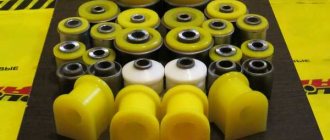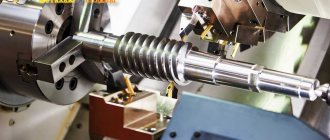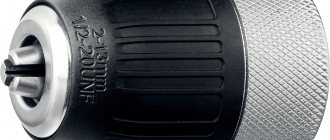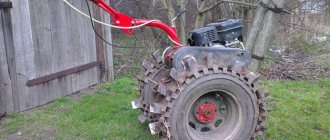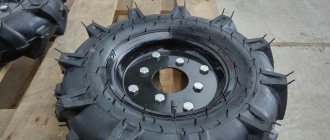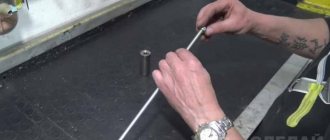What is a silent block of a suspension arm and its functions
In car structures where there are vibrations, displacements, radial and axial loads, there must be softening special rubber parts. They perform an important function, so they need to be changed frequently. Rubber parts that are subjected to compression, stretching, and displacement wear out quickly.
A silent block is a rubber-metal hinge (RMH) in the design of a car suspension. The salent block device includes:
- two metal tubes;
- rubber connection between these tubes.
This part is made by vulcanization, which is why it has excellent vibration insulation properties. Salent blocks are capable of absorbing all types of loads that appear during vehicle operation.
If the silent blocks are heavily worn, then driving the car will be uncomfortable, noise will appear and the joints of the parts will begin to wear out faster.
Silent blocks are installed on the front and rear suspensions. They are installed on levers. In addition to levers, silent blocks connect the mounting points of the gearbox, engines and shock absorbers.
To increase reliability, it is necessary to change vibration isolation pads on time.
Design features
So, two bushings with a rubber layer - it would seem that everything is elementary. But this design is simple only at first glance. How to fix the elastic element in the bushing? A fairly obvious method is strong compression (in other words, tension), however, in this case the connection will be too rigid, which will affect the smoothness of movement.
There is a second option - “gluing” rubber to metal using the vulcanization method - there is almost no compression. But in this case, the rigidity of the connection is clearly insufficient. The angle of torsion and skew increases (relative to the longitudinal axis of the silent block), which entails unfavorable changes in wheel alignment angles while the vehicle is moving. And, accordingly, accelerated uneven tire wear.
Taking these difficulties into account, in the design of modern silent blocks a combined fixation scheme is used: simultaneously by compression (of moderate force) and vulcanization.
Further, the rubber part itself can be solid, or maybe with additional slots. Let's take, for example, the Polo sedan that came to us on a turnkey basis. On it, the rear silent block of the front suspension arm (just the MacPherson type) is installed vertically and there are cutouts in its rubber part.
What are they needed for? To limit the movement of the lever in the longitudinal direction, the stiffness of the bushing should be maximum; but we do not need maximum rigidity when moving the lever in the vertical plane (when hitting an obstacle, for example). To maintain these properties, to put it simply, excess rubber was removed. The bushing provides decent smoothness and rigid fixation of the lever in the longitudinal direction at the same time.
Subsequent developments in engineering led to the creation of floating and sliding silent blocks, again to improve the smoothness of the ride.
Volkswagen Passat B5 in the late 90s “became famous” for the complexity and high cost of the suspension, including floating silent blocks. The
hinge design has become significantly more complicated, additional elements have appeared: an intermediate bushing (plastic), end washers, durable lubricant and side seals. As always, complication has led to higher prices. Seals wear out, lubricant leaks, silent blocks creak, and new ones are expensive. Someday we will return to floating “silents” when a car with such hinges arrives at our repair shop. Today we will limit ourselves to the usual ones.
How to remove silent
Before pressing the silent block into the lever, you need to remove the worn part. There are several methods for pressing in a new spare part. But before you use one of them, you need to properly press out the hinge at home.
Methods for extracting silents:
Knockout
You have to hit the hinge very carefully. Hammer blows must be strong and precise
If you hit weakly and for a long time, the metal parts will flare. Splinters flying off metal and rubber can cause damage to your eyes. If hitting doesn't work, stop and try another method. Drilling. You need to drill slowly, without damaging parts that do not need to be changed. Cutting out. This method is difficult to implement due to the difficulty of accessing the node. To do this, use a grinder or a hacksaw. Welding is often necessary. The grinder emits sparks and is a fire hazard. Using a knife, only cut out the rubber part of the hinge. Burning out. It happens that it is possible to remove the hinge by heating it. But there is a danger of reducing the mechanical strength of the metal part due to overheating. Therefore, the hinge should be wrapped in a wet cloth. Pressing out. It is performed at a service station or in a garage. This is the most reliable and safe option. You can press out the part yourself. But this requires a manual hydraulic press, a vice and special attachments.
The easiest way to remove silents:
- Make a small cut using a jigsaw. Be careful not to hit the lever.
- Use a hammer or other weighty object to knock out the sawn-through holder. Do not throw it away: it may be useful when pressing.
- Clean the seat by removing sharp edges and burrs. Achieve a perfectly smooth surface.
- If the silent does not have an outer metal frame, lubricate the landing site to facilitate the installation process.
On a note!
To lubricate the seat under the silent block, use lubricants based on silicone or lithium or a regular soap solution.
To remove silent bands on their own, car enthusiasts make special removable devices from available materials. To make them you will need:
- bolt with nut - dimensions at the discretion of the craftsman;
- cylinder - it should have such a diameter that the silent block can easily fit into it;
- washers - one for tightly closing the cylinder, the others should have a diameter slightly smaller than that of the silent.
When everything is prepared, close the cylinder on one side with a washer and insert a bolt. On the other side, put the washer on the silent block and screw in the nut to press it out.
Automotive stores sell special kits for removing silent bands:
- hydraulic - they include a hydraulic pump, a hydraulic cylinder, hoses and the unit itself;
- mechanical - they consist of several threaded connections, and the pressing process is carried out with a wrench.
Main faults of silent blocks
Silent blocks are quite reliable parts. Their weighted average resource, with full compliance with manufacturing technology and regulatory loads on the car (or, more simply, when driving on good roads), is estimated at more than 100 thousand kilometers (some experts put the figure at 200 thousand kilometers).
However, taking into account the quality of Russian roads, automakers recommend inspecting the condition of silent blocks every 50 thousand kilometers. If external signs of failure of this part appear, the chassis system must be inspected earlier.
The main external signs of a silent block malfunction:
- the car's handling has deteriorated: the reaction to turning the steering wheel occurs with a delay (in the terminology of experienced drivers, the steering wheel has become “wobbly”);
- in the absence of obvious reasons, the wheel alignment parameters are violated. The fact is that when the silent block breaks, the levers “move” from their normal position. As a result, uneven tire wear begins;
- the car does not hold the road well: it wobbles and sways - this is a loss of directional stability;
- the appearance of extraneous noise in the wheel area: creaks and knocks.
If these signs appear, you should not hesitate to inspect the silent blocks. For self-inspection, you will need a lift or garage pit.
Parts of the chassis system must be cleaned of dirt and well lit.
The silent blocks are examined for cracks, delaminations and tears of rubber or polyurethane, as well as backlashes that should not exist. If defects are found, then in the vast majority of cases a complete replacement of parts is required (generally speaking, there are silent blocks that can be repaired, but they are rare).
The alternative to replacement is not only loss of vehicle controllability, but also subsequent expensive repairs with replacement, for example, of front suspension arms due to destruction of the seats.
The most correct garage method
In a service station, the removal and pressing of silent blocks is carried out with a special puller. And if the master tries to manipulate with a sledgehammer, the most competent action of the car owner would be to immediately flee from such a car service center. However, independent repairers rarely acquire such tools: nevertheless, they don’t have to tinker with silent bands very often, and they cost several thousand. Therefore, pressing is carried out using improvised means.
- The lever is removed from the car. If there is a hole, you can do without this step, but only a person who feels confident in the role of an auto mechanic can master the work in such conditions;
- The old silent block is knocked out of its seat. Since it is only suitable for discarding, there is no need to stand on ceremony with it. Your task is not to damage the rest. To facilitate removal, use WD-40, heating the socket, brute force, cutting the outer shell with a jigsaw;
- The freed eyelet is cleared of all excess that has collected in it. If burrs, scratches, or sharp edges are found, they are sanded;
- The socket is coated with motor oil if the bushing in the silent block is polyurethane, or with soap solution if it is made of rubber. The same procedure applies to the bushing itself;
- The restored lever is clamped tightly and extremely evenly with a vice;
- A silent block is placed clearly at right angles to it. No distortions, otherwise the chassis will not work normally, and the new part will quickly become old, and the whole operation will have to be repeated;
- Next, you will need 2 pipes, one of which must have the same diameter as the bushing of the silent block. One pipe holds the lever, the other is pressed against the silent. With precise, gentle blows, the joint is driven into its intended place;
- Remember to lower the car onto the wheels when tightening the updated suspension, otherwise the lever will be at the wrong angle. And, of course, the last mandatory step should be wheel alignment.
Diagnostics of silent blocks of front levers
The main sign that it is time to replace the silent block is a deterioration in the car's handling. The steering wheel stops quickly “obeying” the driver and begins to respond to actions with a delay. An even more dangerous signal can be the swerving movements of a car on the road. If such a sign appears, there is a real danger for the passengers of this car and other road users. In addition, if you refuse timely repairs, other more expensive parts of the car may be damaged, and tires will wear out quickly.
To make sure that repairs are necessary, you can contact a service center. But it is possible to diagnose the breakdown yourself by conducting a visual inspection. To do this, follow these steps:
- Drive the car onto a viewing hole or place it on a lift.
- Remove excess dirt from the part; it will prevent you from seeing faults.
- Carefully inspect the rubber part for tears and small cracks. If it is swollen or detached, urgent replacement is also required.
- Pay attention to the play. If it is large enough, it may cause the hinge seats to break. In this case, you will have to replace the entire half-weight lever.
- Remove the car from the pit or lift and check the wheel alignment. If it is incorrect, this may also be a sign of damage to the silent blocks.
Reasons for failure
DIY Valve Guide Replacement Guide
The metal part in the silent block rarely breaks, so problems are usually associated with rubber wear.
Reasons for wear of the rubber part:
- the bolts are not tightened correctly;
- the part is incorrectly placed in the mounting socket;
- service life has been exceeded;
- chemical impact - even oil can corrode rubber.
On a note!
Rubber silents creak, even if they are new, their service life is five times less than that of their polyurethane counterparts.
Replacing silent blocks is a complex and responsible operation that should be undertaken with careful preparation and skills in working with a press, vice, jack and other tools. If you install the part incorrectly, you will have to contact specialists and the repair will cost more than a regular silent block replacement.
Replacing the front suspension silent block: subtleties and nuances
Let's start with the fact that quite often the rear silent block of the front lever fails. The process of replacing the silent block itself is not complicated, however, it will require certain skills and tools.
- To replace the front arm silent block, you will first need to find the mounting bolt and unscrew it;
- Next, the fastening nut is removed, after which you can unscrew the bolts securing the lever and the lever is dismantled (you need to pull the part towards you);
- Then the rear silent block should be removed with a puller. If there is no puller, then you can knock out the part with a small sledgehammer, holding the lever in a vice. Care must be taken when doing this, as the lever can be damaged. The next step is pressing in the silent block. For these purposes, it is optimal to use only special tools, but if you don’t have one, you can try pressing in a new element with a hammer. Care must be taken, as there is a risk of damaging the new silent block or lever.;
- If everything went well, all that remains is to assemble the lever in the reverse order and then install the part in place. By the way, the front silent block is tightened when the car is already on wheels. In other words, the tightening of the silent blocks of the front lower arm and the upper one is carried out under load, that is, under the weight of a car standing on wheels;
- Having completed all the work (regardless of whether the rear silent block of the front lever or the front silent block was replaced), it is necessary to diagnose the chassis again. If everything is fine, you can do the alignment. By the way, based on the results, it is possible to understand whether there are still deviations from the norm, that is, whether there is or is not a need to urgently replace any other suspension components of the vehicle.
Let us also add that when choosing replacement parts, you may encounter difficulties in choosing which silent block is better, rubber or polyurethane. So, polyurethane silent is more reliable and durable than its rubber counterpart. Also, polyurethane silent blocks make the suspension more “knocked down” and elastic, the car holds the road more confidently. This is especially noticeable at medium and high speeds.
However, there are also disadvantages. For example, such a silent block is noticeably more expensive than a regular one. At the same time, it is important to select the right products for the car, as well as to carry out installation without errors. Only with proper installation can you count on improvements in suspension performance.
Note that sometimes drivers complain that the polyurethane silent block creaks after installation. For some, the squeaks disappear over time, but for others, in the area where silent blocks are installed, the squeak is constant. This nuance should also be taken into account.
Video
Pressing out at home
Replacing these parts is not as difficult as it might seem at first glance. For example, many car owners made sure of this when they replaced parts, using special equipment for self-replacement. It is for this reason that there are many people who have decided to replace silent blocks with their own hands and at home.
First method
First of all, let's learn about how it should be ideally.
The lever in which the rubber-metal hinge needs to be replaced is installed on a special spacer for the press. The old silent will be squeezed onto this spacer. Then another spacer is installed on top - it squeezes out the old bushing. This method is used by service station workers, since they have the necessary set of spacers and a powerful press of 10-20 tons.
Second method
Almost all car owners, naturally, do not have a powerful press, but many have a jack or a good vice in their garage. If you use a powerful vice, you can successfully squeeze out the old bushings according to the principle that is already familiar to us: a spacer for the original bushing and a spacer for pressing on the bushing.
At first glance, it becomes unclear how you can squeeze out the silent tape with a jack? Everything is very simple: you need to weld a frame in the shape of a rectangle from a channel or corner so that its height is slightly higher than the lever and the jack. The operating principle is as follows: place the jack in the frame, then install the lever eye on top of the rod, as well as the two spacers mentioned above. We create the required pressure, after which the bushing is squeezed out of its seat. It must be emphasized that most often a jack with a capacity of 3-5 tons is not able to cope with such work, therefore it is recommended to use 10-ton jacks.
Third method
If you have neither a press nor a jack, but still have a strong desire to replace the silent blocks on your own, you can use the third method - using a simple press puller (bolt with nut or stud).
The principle of operation is to create pressure by gradually tightening the nut on the stud; this method can be called an analogue of a vice. This pin with a washer of suitable diameter is inserted into the eye through the silent block, then on the other side you should put on a spacer with a washer and tighten the nut. Rotating along the thread, the nut creates the necessary pressure and forces the silent to be squeezed into a special spacer.
This “method” requires the use of a strong, hardened stud and an equally strong nut. If you take a soft pin or nut, you will most likely fail. For example, there are cases when, due to strong pressure, the stud becomes bent, as a result of which the thread on the nut breaks. However, there are thousands of those who managed to change silent blocks using this particular method. After all, everything depends on the quality and strength of the material used.
The advantage of this method is its low cost, as well as its convenience, if you look at it from the “mobility” point of view. In other words, you don’t need, for example, to completely remove the lever or the entire hub; it will be enough to just have a simple press puller like this.
Fourth method
This method can be classified as drastic decisions or extreme measures. Its principle is to use all popular methods and devices to extract silent from the seat. To do this, you need to knock out the old part using a powerful screwdriver or a thick wedge-shaped piece of reinforcement. You need to try to hammer a screwdriver or something between the silent block and the bushing, thus deforming the wall of the bushing inside. Now that the bushing is crushed and pushed inward, it is not at all difficult to knock it out. Before you start knocking out the silent block, you need to squeeze out or burn out the inner sleeve of the part and, if possible, all remaining rubber.
Fifth method
The next method of removing a silent block cannot be called pressing out, since it, like the previous one, does not require the presence of a press: all you need is a metal blade, a hammer and a screwdriver. The principle is simple, but unsafe. We remove the inner sleeve, then take the blade and start cutting the outer sleeve. Try to cut through the old silent as much as possible without damaging the lever itself or the eye. It is best to make two cuts, and then using a flat screwdriver, the silent block will be easily deformed and knocked out.
Which is better - a floating silent block or a regular one?
There are conflicting opinions about floating silent blocks - some consider them too expensive for Russian roads, others note their rigidity. There is another unpleasant moment - they can leak. When lubricant leaks out of the housing, the amount of work they have to do is reduced. In this regard, ball joints are inferior to conventional ones.
Unlike a rubber one, a floating silent block can be rotated to a greater angle, maintaining a reliable position in the structure. A strong connection of elements with simultaneous mobility is ensured. Ball joints are ideal for installation in the rear suspension, as they ensure the correct position of the rear wheel axle to the road.
The purpose of conventional and floating hinges is the same - to dampen vibrations, with the difference that in normal operation at an average load, the latter act as rubber silent blocks, and when the load increases, they withstand strong shocks and impacts. This is due to the presence of lubricant, which ensures free movement of the bushing, while rubber wear occurs in rubber bushings.
Conventional silent blocks have a short service life, especially in conditions of bad roads, high or low temperatures.
During intensive work in conventional silent blocks, slipping is possible, accompanied by squeaking sounds. Floating hinges do not have this drawback, since the inserts are made of synthetic rubber or polyurethane.
One of the advantages of floating silent blocks is that they do not require maintenance. When new, they are not afraid of water and dust. Works great without lubrication. And when they wear out, they are replaced with new ones. They can last about 10 years under normal conditions without exposure to aggressive environments and overheating. Floating hinges are installed in movable joints where conventional silent blocks are not able to ensure the accuracy of movement of elements relative to each other. They allow the wheel to move in different directions.
The disadvantages of ball joints include:
- dependence on operating temperature and range of motion;
- susceptibility to an aggressive environment.
Rubber-metal joints are inexpensive spare parts with reliable quality characteristics. But rubber is subject to rapid wear under the influence of an aggressive environment and increased loads. That is why in difficult conditions it is better to use hinges with a polyurethane gasket. The material can withstand Russian frosts, overheating, and the chemical environment on the roads. Polyurethane hinges are durable. The only drawback is the high price, but it is justified by the long service life.
If it is financially possible, it is better to replace the rubber silent blocks with polyurethane ones to ensure a comfortable ride.
JTC 1-4091
A universal kit for removing and installing silent blocks is an ideal tool for vehicle maintenance.
It includes 11 items that, in addition to the parts already mentioned, are suitable for installing and dismounting bushings or bearings (including those with a rubber bushing).
Characteristics:
- The inner diameter of the sleeves (20 pieces) is 34–72 mm with a pitch of 2 mm.
- Support discs used together with liners - 2 pieces.
- Bolts with a length of 450 mm - M16, M14, M12, M10.
- The weight of the set is 3.3 kg.
Pros:
- All elements are made of high strength steel.
- Supplied in a durable case, making it easy to care for and transport the set parts.
- Relatively light weight.
- Case strength.
Cons: No socket or ratchet to make the job easier.
In 2013, an all-female workshop opened in Philadelphia, where only women work as craftsmen, and this despite the fact that the majority of clients
—
also female.
The cost of silent blocks of the lever
First of all, the price will depend on the material from which the silent block is made. There are two types recognized - rubber with metal bushings and polyurethane. Many drivers will say that polyurethane ones are much better, but they also cost five times more than rubber ones. The reason for this difference is quite simple: polyurethane silent blocks are easier to change, pressing is easy and does not require much effort. In terms of service life on a car, they last 5 times longer than rubber ones. In terms of pricing policy, a lot depends on the make and model of the car, and maybe also on the year of manufacture. As an example, a silent block for a Mazda 626 engine mount will cost from 1,200 rubles. On the Chevrolet Epica 2.0, for the rear upper control arm it will cost about 1,150 rubles per piece. The price is for rubber ones, polyurethane ones will be many times more expensive. There is only one conclusion: if the car model is not expensive and you do not use it often, then there is no point in installing expensive ones, but if the opposite is true, and you will change it often (considering the quality of our roads), then it is better not to skimp on the quality of the material and install only high-quality ones . This way, you can save money and time on the replacement process. As soon as the first symptoms of failure of the silent blocks of the car appear or it is clear that the wheel camber/toe is incorrect, do not rush to go to a service station to have it corrected. First, inspect the silent blocks for damage, and remember the last time they were replaced.
Sources
- https://www.kolesa.ru/article/sajlentbloki-avtomobilnoj-podveski-kak-oni-ustroeny-i-kak-ih-menyat
- https://autostuk.ru/kak-pomenyat-sajlentbloki-na-perednix-rychagax.html
- https://unit-car.com/ustroystvo/272-saylentblok-v-avtomobile.html
- https://voditelauto.ru/%D1%81%D0%B0%D0%B9%D0%BB%D0%B5%D0%BD%D1%82%D0%B1%D0%BB%D0%BE%D0 %BA%D0%B8-%D0%BF%D0%B5%D1%80%D0%B5%D0%B4%D0%BD%D0%B8%D1%85-%D1%80%D1%8B%D1 %87%D0%B0%D0%B3%D0%BE%D0%B2/
- https://KrutiMotor.ru/zamena-sajlentblokov-perednih-rychagov/
- https://saylentbloki.ru/plavayuschiy-saylentblok.html
- https://fastmb.ru/autoremont/1834-prednaznachenie-saylentblokov-v-avtomobile-i-kogda-nuzhno-ih-menyat.html
How to choose
Do-it-yourself pressing and pressing of silent blocks
Of course, before moving on to choosing a specific puller for the front or rear silent blocks, you first need to understand what kind of device it is and what it is used for.
Appearance
There can be a wide variety of such tools, because today they are presented both as a separate C-shaped device with several attachments, and as whole sets, which include guide pins with nuts, sleeves and support disks for them.
There are also universal pullers and those designed for a specific car brand, which must be taken into account when purchasing.
A correctly selected product will help you easily cope with difficult work, since the silent block is quite firmly fixed in its seat and sometimes it takes a lot of effort to remove it.
Depending on the type of part (whether it is an element of the front suspension, stabilizers or fastening of torque rods) installed on a car or truck, a puller for removing silent blocks - elements that reduce rattling and noise when the vehicle is moving - will have its own characteristics.
Among the wide variety of domestic and foreign tools presented on modern markets, you can find absolutely any puller that will meet all the technical parameters of your machine and individual requirements (for example, cost).
However, the main task in any case remains the choice of a quality product that will serve faithfully for many years.
Therefore, now we invite you to familiarize yourself with the list of characteristics that are worth paying attention to, and the list of features that are unworthy of it.
The world's first automobile repair shop opened in 1899 in Boston.
What to look for:
So, when choosing a silent block remover for VAZ cars or foreign cars, you should consider the following:
- the model of your car, unless, of course, you decide to buy a universal tool (by the way, there is an opinion that specialized products are much more durable than universal pullers, but in practice it all depends on the manufacturer);
- the presence of smooth edges in all threaded connections of special tools;
- absence of rough areas and open shells;
- ease of unscrewing and tightening detachable parts;
- the requirements of the selected model for other, additional tools, without which it cannot be operated;
- type of puller: manual or hydraulic (for personal use or for car maintenance in small workshops, the first option will be sufficient);
- Availability of instructions in a language you understand.
Sellers can assure you that the same instructions are not so important, because the mechanism of the tool is extremely simple and easy to use, but you must understand that when delivering quality products, such a trifle cannot be a problem.
What you can ignore:
In addition to the indicated important criteria for choosing a silent block remover (both universal and for specific vehicle models), there are also several less significant nuances that can often be regarded as a regular advertising ploy. These include:
- a list of functions that almost all models perform: easy removal of silent blocks, long service life, etc.;
- the relationship between price and quality (despite the fact that many people associate these two indicators, more well-known companies may unreasonably inflate the prices of their tools, and with a more careful study of the offers on the market, you can find a puller with the same characteristics, but at a more affordable price) .
FORCE 949T1
The model belongs to the hydraulic puller type, the set of which includes 49 items. With its help, you can easily disassemble the bushing and replace it (with the exception of parts without holes). Compared to the above puller options, FORCE 949T1 is lighter and easier to use.
Characteristics:
- The maximum load on the cylinder is 18.2 t.
- The comfortable and durable spindle has dimensions: Ø 16 mm, Ø 14 mm, Ø 12 mm, Ø 10 mm.
- Deep mandrels - 22 pieces (18 internal ones of 110 mm each and 26 external ones of 68 mm each).
- Short mandrels - 22 pieces (18 internal 40 mm and 26 external 68 mm).
- Bolts - 4 pieces (diameter 16, 14, 12, 10 mm).
- Type - hydraulic universal puller.
Pros:
- Convenient collars.
- Sturdy case with metal clasps.
- Strong ratchets.
- Long heads.
- The handles are made of high-quality material that is not corroded by technical liquids.
Minuses:
- All parts of the puller are sensitive to moisture and quickly rust when exposed to it.
- High price.
It is better to store any tool in a dark place protected from dampness.
How to remove the old device?
Few motorists know, but you can press out and press in silent blocks at the same time. There is nothing unrealistic about such a procedure. The only thing that should be taken into account is that such an extraction scheme is not suitable for all types of devices. In some situations, performing such a task may not be the best solution. Therefore, the method of replacing a silent block will directly depend on what part of the car it is located in. So, in the suspension elements it is possible to knock out the device with each other, but in the gearbox and shock absorbers it is not possible to do this. And one of the easiest ways to press out a silent block is to remove the inner sleeve with an elastic band by standard extrusion. In this case, you next need to carefully cut out the outer sleeve with a file and try to knock it out with a hammer. If the process fails, you can use a wide metal block, which must be placed under the hammer on the base of the mechanism. As a rule, thanks to such manipulation, although with some effort, it is still possible to remove the old silent block.
